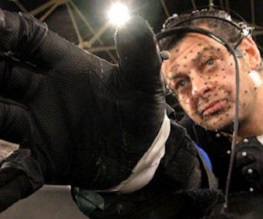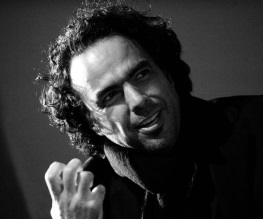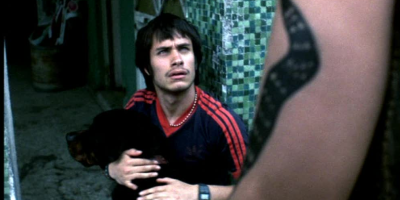Outside the Law (Hors La Loi)

Between 1954 and 1962, almost a million people – civilians, soldiers and guerilla revolutionaries – were killed in the Algerian War, a conflict which is almost entirely missing from the English-speaking world’s frame of reference. Picking up the story which began with 2006’s Indigènes, a searing indictment of the white French attitude towards colonial North Africans during WWII, Outside the Law (or, more properly, Hors La Loi) follows the (fictional) story of a family inextricably bound up in the long, arduous and bloody struggle for Algerian independence. As we sit in England and America and mutely watch the Middle East tear itself apart, perhaps we need films like this more than ever.
Hors La Loi is not a film about war, resistance or terrorism – rather, it is a story about three brothers and their different reactions to the extraordinary turns their shared lives take. We first meet Saïd, Abdelkader and Messaoud in 1925, as they are evicted from the desert farm which their forefathers have worked since time immemorial. Twenty years later, their family is caught up in the infamous Setif massacre and Abdelkader (Bouajila) is imprisoned in France whilst his father and sisters are shot, leaving Saïd (Debbouze) to care for their mother whilst Messaoud (Zem) serves in Vietnam.
Fastforward a further eight years and Saïd moves his mother to a shanty town on the outskirts of Paris to await Abdelkader’s release and Messaoud’s discharge – by the time the three brothers are finally reunited, Saïd has become a pimp and Abdelkader’s long stint in prison has thoroughly radicalised him. Decorated army officer Messaoud wants nothing more than to settle down and start a family, but Abdelkader’s vision of a free Algeria quickly overtakes the simpler joys of having his family reunited at last.
As the narrative proceeds through the 1950s in snapshots of a few hours every six months or so, the three brothers’ relationship becomes increasingly complex and fraught. Abdelkader rises inexorably through the ranks of the Algerian resistance with the gentle and obedient Messaoud as his bodyguard and contract killer, whilst Saïd’s expanding business empire masks his secret dream of training a champion boxer. But Abdelkader’s rabble-rousing is attracting unwelcome attention, and as the police reprisals become more brutal all three brothers are forced to question their motives for living outside the law.

Conceived as a stand-alone film, Hors La Loi nevertheless forms part of a continuum which Rachid Bouchareb began with Oscar nominee Indigènes and intends to complete with a third film detailing the last fifty years of immigration to France. This second instalment has been five years in the making, and it’s easy to see where the time and effort went; the three leading men all starred in Indigènes, and Bouchareb has gone so far as to keep the same names for their characters.
It’s clear these actors have worked together before – the dynamic between them is utterly believable, with affection waxing and waning as each brother’s different foibles creates and lessens tension in roughly equal measure. Even without having seen Indigènes you may recognise Jamel Debbouze from Amélie and Angel-A, whilst both Zem and Bouajila appeared in Bouchareb’s 7/7 drama London River; all three deserve much wider recognition, which they and Bouchareb might just find if their second Academy Award nomination is more successful.

The expansive 138 minute running time may lose less committed viewers, and the bitterly partisan attitude present in some of Bouchareb’s previous work is still very much present – in particular, Abdelkader’s repeated insistence that his guerilla war mirrors the conflict between the French Resistance and the Third Reich is heavy-handed and unnecessary – but this is a very, very good film. Tightly scripted (by the director), inventively shot and envisioned on a grand enough scale to show an entire war as the backdrop of one family’s struggles, even Iñárritu’s Biutiful may not be able to stand up to Rachid Bouchareb this year.





Recent Comments